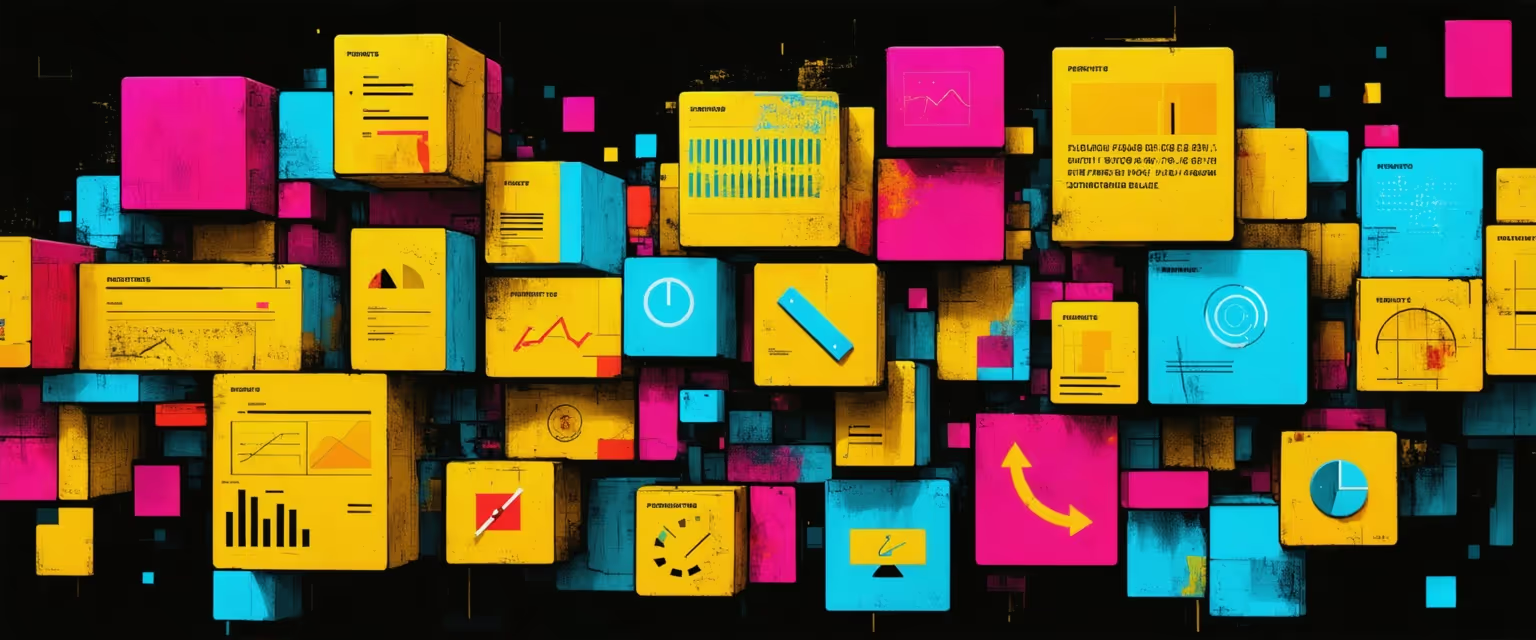All Posts
Construction - AI-Powered Construction Safety & Compliance
How AI is Transforming Construction Safety: Automating Accident Prevention

Explore how AI automates accident prevention in construction, transforming safety with predictive analytics, smart PPE, and robotics for risk-free worksites.
Are you a construction manager overwhelmed by fragmented safety data, struggling to monitor fall risks, equipment malfunctions, and regulatory compliance? The disarray of scattered information not only saps your time but also heightens on-site dangers. Discover how AI automates workplace accident prevention in construction, offering targeted solutions by unifying all your safety data into a single, manageable platform like Datagrid.
By streamlining data exchanges, AI-powered data connectors keep your projects on schedule and within budget. In this article, we'll explore how Datagrid’s intelligent connectivity can transform safety and efficiency on your construction sites.
Current Challenges in Construction Safety
Keeping everyone safe on a construction site is no walk in the park. Hazards can range from elevated fall risks to exposure to hazardous materials, making it essential to recognize the most common threats and understand where traditional safety measures sometimes miss the mark.
Common Safety Hazards
Falls from scaffolding, ladders, and other high places are major contributors to preventable injuries and fatalities. Close on their heels are electrical dangers—live wires and faulty gear that can deliver a nasty shock.
Then there's heavy machinery that could cause crush injuries or worse, amputations. Don't forget about toxic substances like asbestos and lead lurking around, setting up long-term health nightmares. And those confined spaces with poor ventilation? They're a recipe for suffocation and exposure to harmful fumes.
Limitations of Traditional Safety Measures
The usual safety protocols—think PPE and basic training—are only as good as the workers' compliance and often kick in post-incident. They tend to be reactive, not proactive, leaving gaping holes in safety measures.
Plus, traditional practices can't always keep pace with new tech that brings its own set of risks unaddressed by outdated guidelines. Throw in undertrained staff and human factors like fatigue, and you've got a recipe for compounded challenges.
Need for Advanced Prevention Strategies
Shifting from reactive to proactive requires advanced systems, including enhanced automation, that can predict and prevent hazards before they blow up. Enter AI, offering real-time on-site monitoring and IoT sensors that keep tabs on everything from ambient temperature to worker vitals.
How AI Automates Workplace Accident Prevention in Construction
AI isn't just about automating tasks; it's revolutionizing how job sites foresee and tackle safety risks. By blending computer vision, predictive analytics, and real-time data, these systems supercharge on-site prevention strategies. Understanding different types of AI architectures is crucial, as they each offer unique capabilities for enhancing safety measures in construction.
Overview of AI Technologies Used
Standard safety checks can overlook issues that pop up throughout the day. AI automates workplace accident prevention in construction with nonstop surveillance and real-time processing.
Automated systems use image recognition and smart sensors to scan for noncompliance—way more effective than old-school spot checks.
Predictive Analytics and Risk Mitigation
Predictive analytics taps into historical data to anticipate potential hazards, enhancing operational efficiency. Systems, often employing AI agents, crunch accident records, weather forecasts, and site layouts to spot conditions that could trigger injuries. Through real-time monitoring, these systems enable safety teams to proactively address potential risks.
Armed with this intel, safety teams can schedule maintenance, shuffle staff, or kick off new protocols before things get dicey.
Wearable Technology and Smart PPE
Helmets and vests loaded with sensors keep tabs on heat stress, air quality, and posture. When things start veering into the danger zone, alerts ping both the worker and supervisor.
Smart PPE powered by AI automates accident prevention, helping everyone stick to safety standards even when the environment keeps changing. But striking the right balance between comfort and privacy is still a challenge.
Impact on Workforce and Safety Protocols
Changes in Job Roles
With AI taking over repetitive tasks and monitoring, workers can pivot to the creative and analytical aspects of projects. Think about transportation and logistics—telematics spots risky driving behaviors without human intervention. In manufacturing, AI keeps an eye on production lines for quality and efficiency hints.
Enhanced Safety Protocols
AI acts like an ever-present safety supervisor on the job site, enhancing compliance monitoring. Cameras and sensors monitor workers' movements and equipment usage, sending real-time alerts if someone bends a safety rule.
Additionally, AI can assist in proposal validation, ensuring that safety protocols are integrated into project planning. Predictive maintenance, another AI tool, forecasts equipment failures before they throw a wrench in operations.
Workforce Empowerment
By offloading tedious tasks, AI frees up workers to zero in on higher-level decisions. It also offers hands-on learning through simulations, letting teams rehearse handling potential safety incidents in risk-free virtual settings.
How Agentic AI Simplifies Construction Task Automation
For construction project managers balancing countless moving pieces, Datagrid’s data connectors and AI agents crank up efficiency. By bringing essential construction software under one roof, routine tasks like paperwork and scheduling eat up less time, letting managers focus on what really matters.
Imagine hooking up Procore, PlanGrid, or Autodesk BIM 360 to Datagrid. RFPs, submittals, and change orders sync automatically across systems, thanks to structured workflows, cutting down delays from manual data entry or missed messages.
AI manages incoming bid documents, stacking them against previous projects, and highlighting spots that need attention through automated proposal writing. AI agents also keep tabs on permits and deadlines across various jurisdictions.
Datagrid doesn't stop at construction-specific tools. Hook it up to Microsoft Project or Primavera P6 to monitor schedules and resource use in real time. Connect it to financial systems like Sage 300 or QuickBooks to automate cost analysis and keep budgets up to date.
Enabling Efficient Document Management
Staying compliant gets tricky when you're buried in RFIs, submittals, and change orders. Using OCR technology, Datagrid’s AI agents extract key details from each doc and route them to the right person or team. This slashes wait times and makes sure fewer things fall through the cracks.
Enhancing Safety Compliance
Datagrid integrates with your safety management system to identify problems like expired equipment certifications or unqualified personnel. Alerts fire off immediately when something needs fixing, keeping worksite safety front and center at all times.
Progress Tracking and Communication
Daily progress reports, photos, and schedule tweaks all flow into one dashboard, thanks to seamless integration. The platform shoots out progress summaries and flags potential project delays ahead of time, helping to enhance scheduling efficiency.
With integrations into Slack or Microsoft Teams, everyone stays in the loop. When an RFI gets answered or a safety incident happens, the right folks find out immediately.
Simplify Construction Project Management with Agentic AI
Ready to bring AI-driven workplace accident prevention in construction to life? Datagrid is your solution for:
- Seamless integration across all major construction platforms (Procore, PlanGrid, BIM 360)
- AI-driven RFP analysis and bid management
- Automated submittal and change order processing
- Real-time project insights and schedule optimization
See how Datagrid can help you increase process efficiency.











